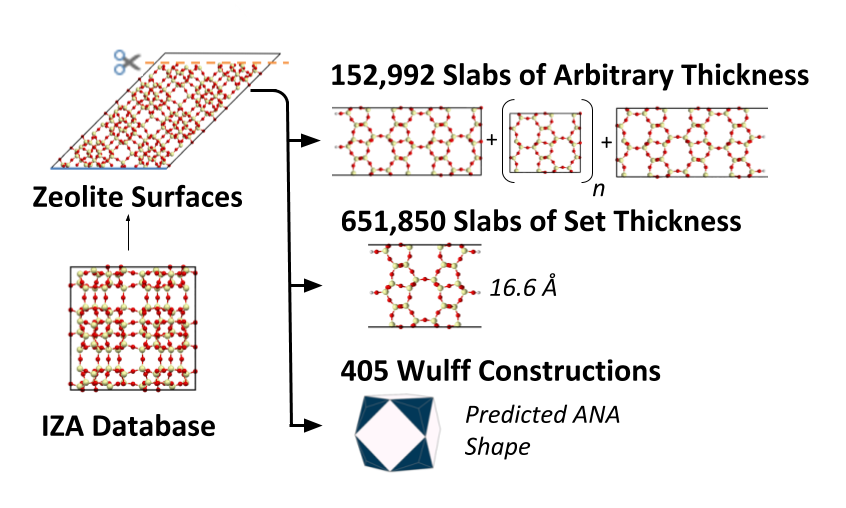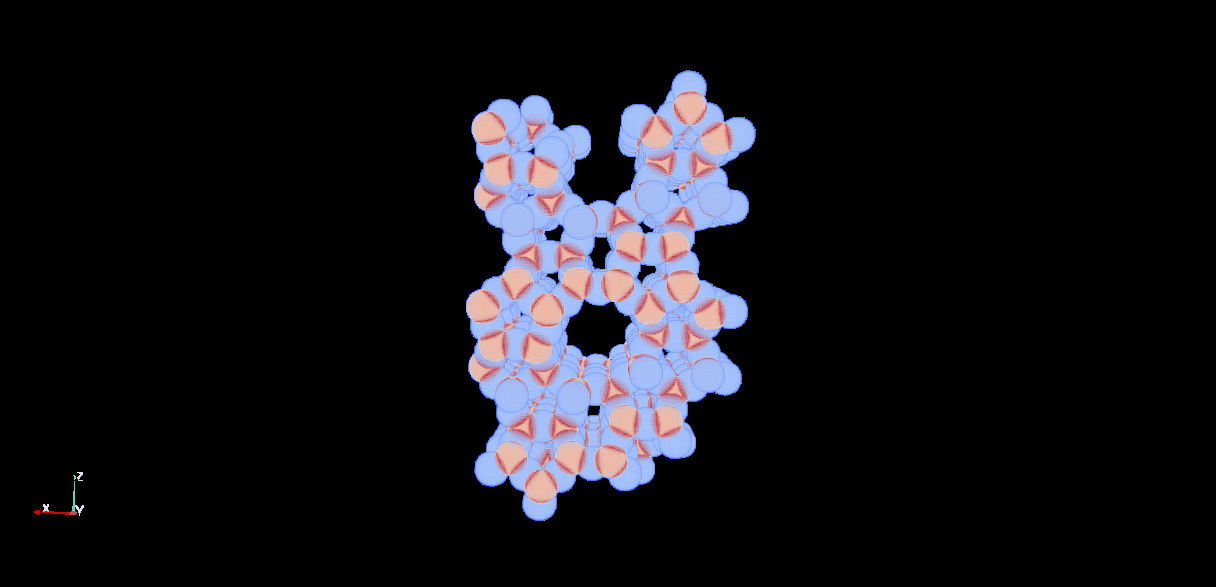Nanoporous 2D Materials
Description of N2DM workflow
Nanoporous materials are defined as materials having pore less than 100 nm in size which are often comparable to the size of individual molecules.
Nanoporous materials have a series of unique properties, making nanoporous materials useful for industrially important applications such as gas storage, separations, catalysis, et cetera. A vast number of unique nanoporous materials can be synthesized, varying in chemical composition and pore topology. In addition hundreds of thousand hypothetical materials have been computationally predicted and a considerable number of computational screening studies have appeared in the literature that examine the potential of nanoporous materials for a series of applications.

The Structure of a MFI based slab is visualized as below:

Commonly used classes of nanoporous frameworks are metal-organic frameworks (MOFs), zeolites, and porous polymer networks (PPNs). In our present work, we have synthesized, in-silico, a large number of this nanoporous 2 dimensional zeolite slabs. These slabs are available for public download at this download link
The IZA bulk zeolite crystal definitions can be found at the following download link.